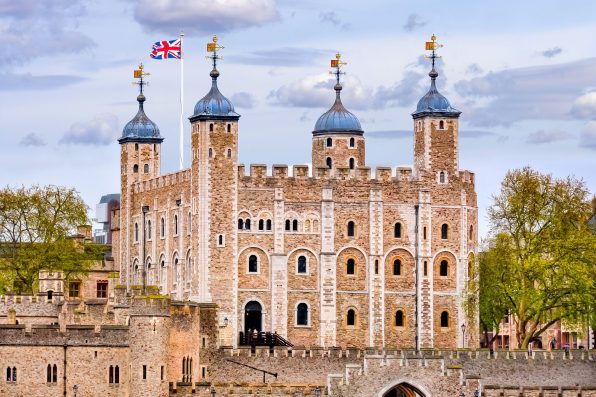The Tower Of London May Be Known For Its Gruesome History As A Prison And Execution Site, But It’s Also Home To The Royal Family’s Crown Jewels

When I did a study abroad program in London, England, I remember several people telling me I had to see the Tower of London. It’s considered one of the most infamous attractions in the historic city.
Most people are well aware that the Tower of London is a castle that has functioned as a prison, execution site, etc., but it has a much more complex history than some may realize and is a fascinating piece of history that sits right on the Thames and is visited by millions of visitors every year.
If you don’t know much about the Tower of London, here’s a bit of its history that breaks down its complex past.
The Tower of London’s first structure, the White Tower, was built in 1100 while King William II ruled. Not long after construction on the tower was completed, royals decided to use it as a prison, and monarchs following King William II found several reasons to expand it and build several structures.
Because the Tower of London is known for its more gruesome place in history, being a prison and execution site, some people are surprised to learn that it’s where the royal family’s Crown Jewels are stored.
The Wardrobe Tower, completed in 1199, was designated to hold royal garments and the Crown Jewels of England. Many visitors flee to the tour each year just to see the fascinating jewels and crowns, including the St. Edward’s Crown, worn by all monarchs, including the recent Queen Elizabeth II and King Charles III, since the early 1600s.
Today, the Tower of London has 21 towers, each serving a different purpose. It eventually became the ultimate place for incarcerating and torturing criminals who threatened national security.
Interestingly, class played a big role in the treatment of prisoners at the Tower of London. Though it is well known for its horrid treatment of criminals and torture tactics, more wealthy and prominent criminals didn’t have it so bad and lived luxuriously.
Those not so lucky had to suffer the torture that the Tower of London was famous for. If old-fashioned torture techniques fascinate you, the Tower of London should be on your England itinerary.

Mistervlad – stock.adobe.com – illustrative purposes only
For instance, one of the most renowned torture tactics was placing prisoners in a confinement cell called “Little Ease,” a cell where no one would be able to fully stand up or lie down, making it impossible to rest or sleep.
Torture was primarily used at the Tower of London for prisoners withholding valuable political information and used as a way to get them to confess. Many historians have stated that executions were more prevalent at the Tower of London.
History’s favorite bad husband, King Henry VIII, notoriously had two of his six wives executed at the Tower of London. First was Anne Boleyn in 1536, who he had executed for adultery and conspiracy against the king. Then, in 1542, he had Catherine Howard, his fifth wife, executed for adultery in 1542.
The last person to be executed by beheading, the most notorious execution technique at the Tower of London, was Simon Fraser for his role in the Scottish Jacobite Rebellion in 1745. It continued to be used as a prison and execution site into the 20th century, including during World War II.
There are a few permanent residents at the Tower of London – ravens! At least six ravens live at the Tower of London at all times, as an old superstition that if there are no more than six ravens on site, the tower will fall is still believed.
There are seven ravens properly cared for by a ‘Ravenmaster’ at the Tower of London to this day, and you may be able to catch a glimpse of them during a tour.
The Tower of London eventually became a site solely for tourism and the home of the Crown Jewels. It’s been maintained and cared for through charities, and tourists can enjoy all kinds of fun tours, from themed tours with actors dressed in medieval costumes to self-guided tours.
If you’ve ever been to London, did you take the time to visit this incredible historical structure?
Sign up for Chip Chick’s newsletter and get stories like this delivered to your inbox.
More About:Travel





